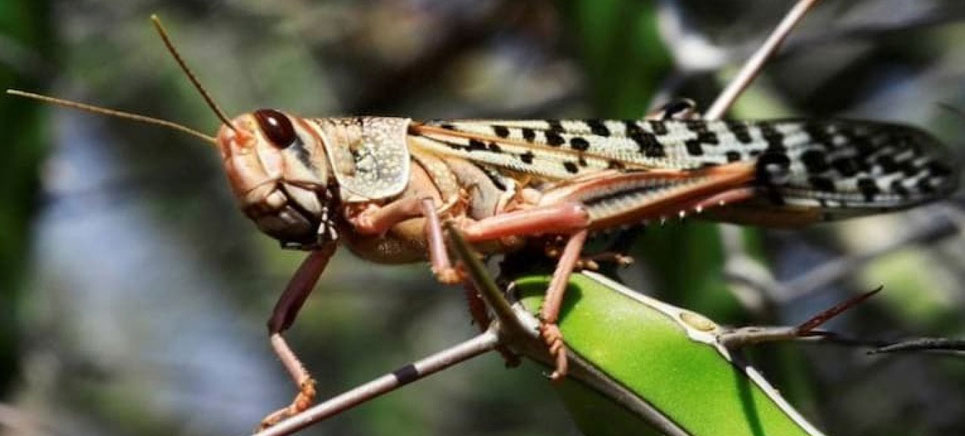What are Locusts?
Similar to common grass-hoppers in appearance, locusts are a group of insects that are found all around the the world. These insects of Acrididae family suddenly grow in numbers when conditions are favorable. Locusts are capable of long-distance migration in swarms that destroy green vegetation, including crops.
Most devastating species of locusts is desert locust (Schistocerca gregaria).
Facts about Locusts
Desert locusts grow in two phases:
- Solitary phase: locusts in solitary phase do not group together. They camouflage by adjusting their coloration according to their surroundings.
- Gregarious phase: locusts in gregarious phase do not camouflage or remain solitary. They change their color to black, yellow or orange and unite together in huge swarms.

solitary (left) and gregarious (right) locusts
When solitary locusts rub against each other, the serotonin level in their bodies go up. This increase in serotonin causes the transformation of locust from solitary to gregarious phase. The shy and solitary locusts become social after transformation and crave for more bonding. This is the reason they make such massive swarms.
One square kilometer big swarm may consist 40 million locusts. Such a swarm can every day eat food that could feed 35,000 people.
A desert locust swarm can be as big as 460 square miles.
A solitary desert locus fly during the night and rest during the day. However, locusts in gregarious or swarm-forming phase fly during the day and rest at night.

An adult desert locust can eat food equal to its own weight every day.
A swarm the size of Paris can eat the same amount of food in one day as half the population of France.
Locusts do not attack humans or animals. They also do not carry diseases. In this way locusts are not dangerous to people.
Locusts have insatiable apatite. When they finish eating all the vegetation around and don’t find anything else to eat, they turn cannibals — meaning they will begin eating each other.
Desert locusts can achieve speed of 12 miles per hour.
Adult desert locust swarms can fly up to 150 kilometers within a day along the wind direction.

Locusts can stay in the air for long periods of time. They regularly cross the Red Sea, a distance of 300 kilometers.
In 1988, a swarm of locusts traveled from West Africa to the Caribbean, covering a distance of 5,000 km in about 10 days.
Locusts are edible insects and people do eat them in many parts of the world. They are considered halal or lawful food in Islam.

Locusts have waterproof skin as the outermost layer of their cuticle is made of wax. Thus they can repel water-based insecticides.
The lifespan of locusts is about eight weeks.
Locusts are mentioned in the ancient literature like the Iliad, the Mahabharata, the Bible and the Quran.
Use the citation below to add this article to your bibliography
"Locusts: Facts on Desert Swarms that Attack the Crops." Dashamlav.com. Web. 27 July 2024. <https://dashamlav.com/locusts-facts-desert-swarms-attack-plague-crops/>
Dashamlav.com, "Locusts: Facts on Desert Swarms that Attack the Crops." Accessed 27 July 2024. https://dashamlav.com/locusts-facts-desert-swarms-attack-plague-crops/
"Locusts: Facts on Desert Swarms that Attack the Crops." (n.d.). Dashamlav.com. Retrieved 27 July 2024 from https://dashamlav.com/locusts-facts-desert-swarms-attack-plague-crops/
